7 Questions to Consider Before Planning a Kitchen Renovation
Experts share the key things they ask clients before redesigning a kitchen
Amanda Pollard
1 September 2022
Senior Editor at Houzz UK and Ireland. Journalist and editor specialising in interiors and architecture.
Senior Editor at Houzz UK and Ireland. Journalist and editor specialising in interiors... More
If you’re planning a new kitchen, a designer can help you make the most of the space to ensure the room works perfectly for you. But what are the key questions to think about before you hire your kitchen professional? We asked three experts to share the top things to consider before your first meeting with a specialist.
Professional advice from: Diane Berry of Diane Berry Kitchens; Chris Chapman of Chris Chapman Bespoke Kitchens & Furniture; Barry Sawyer of Brayer Design
Professional advice from: Diane Berry of Diane Berry Kitchens; Chris Chapman of Chris Chapman Bespoke Kitchens & Furniture; Barry Sawyer of Brayer Design
1. How will you use your kitchen?
Before you even think about colours and materials, kitchen designer Diane Berry recommends you focus on function. “Try to build a wish list of what the room needs to do and the contents it needs in order to function,” she says.
“Start also by asking yourself whether you want a dining-in kitchen and for how many people,” Diane continues. “Also, whether you need a snug space with a TV, how many sinks you want, and whether you need a waste disposal. Really try to consider all your family needs and remember the stuff like where outdoor shoes and the vacuum cleaner will go.”
Find kitchen designers in your area, see photos of their work and read reviews from previous clients.
Before you even think about colours and materials, kitchen designer Diane Berry recommends you focus on function. “Try to build a wish list of what the room needs to do and the contents it needs in order to function,” she says.
“Start also by asking yourself whether you want a dining-in kitchen and for how many people,” Diane continues. “Also, whether you need a snug space with a TV, how many sinks you want, and whether you need a waste disposal. Really try to consider all your family needs and remember the stuff like where outdoor shoes and the vacuum cleaner will go.”
Find kitchen designers in your area, see photos of their work and read reviews from previous clients.
2. What style of kitchen would you like?
Barry Sawyer recommends you start your kitchen design by gathering lots of inspiration. “Spend some time online looking at different kitchen styles and create a moodboard; Houzz is a great resource for this,” he says. “Not only will a moodboard help you crystallise your ideas, it will be an invaluable tool for your kitchen designer, too.
“When crafting a new design, our team will consistently return to client moodboards to ensure we’re really capturing the essence of the project,” he adds.
Things to consider while finding ideas, according to Barry, are what style of kitchen will suit the architecture or preferred interior style of your home and whether you want to opt for a clean and contemporary design or a more classical one.
Barry Sawyer recommends you start your kitchen design by gathering lots of inspiration. “Spend some time online looking at different kitchen styles and create a moodboard; Houzz is a great resource for this,” he says. “Not only will a moodboard help you crystallise your ideas, it will be an invaluable tool for your kitchen designer, too.
“When crafting a new design, our team will consistently return to client moodboards to ensure we’re really capturing the essence of the project,” he adds.
Things to consider while finding ideas, according to Barry, are what style of kitchen will suit the architecture or preferred interior style of your home and whether you want to opt for a clean and contemporary design or a more classical one.
3. Which surface materials would work best?
The flooring and worktop materials you choose will have a huge impact on the look and function of your kitchen, so it pays to consider them early.
“Flooring is a fundamental aspect of your kitchen design – in fact, it’s one of the first things you should consider before you pick your colour scheme with your kitchen designer,” Barry says. One of the main things he recommends you consider is whether you want it to run throughout the ground floor of your home, or to help your kitchen feel separate from the rest of the house.
For worktops, Barry suggests looking at the pros and cons of different materials, and lists the following:
The flooring and worktop materials you choose will have a huge impact on the look and function of your kitchen, so it pays to consider them early.
“Flooring is a fundamental aspect of your kitchen design – in fact, it’s one of the first things you should consider before you pick your colour scheme with your kitchen designer,” Barry says. One of the main things he recommends you consider is whether you want it to run throughout the ground floor of your home, or to help your kitchen feel separate from the rest of the house.
For worktops, Barry suggests looking at the pros and cons of different materials, and lists the following:
- Natural marble – undoubtedly beautiful, but porous and tends to be prone to stains.
- Granite – incredibly hard-wearing, but generally dark and busy in appearance.
- Composite stone – functional and stain-resistant, so perfect for busy households.
- Solid wood – eye-catching and oh-so beautiful, but requires ongoing maintenance.
- Corian – very functional and can be seamlessly integrated into the rest of your kitchen design.
4. Which appliances do you want to include?
“Your kitchen designer will guide you through all the options you need to consider,” Barry says, “but at the early stages of the design process, the main questions to think about are whether you prefer eye-level ovens or a range cooker, whether you want a stainless-steel, American-style fridge-freezer or prefer concealed appliances, and whether you have your eyes set on any additional appliances, such as wine coolers or steam ovens.”
If you have space for a kitchen island, Barry recommends you think about whether you want it to include a hob and/or sink, so you can utilise it for cooking, or whether you prefer to keep it clear for socialising with family and friends.
You might also enjoy How to Choose a Kitchen Designer.
“Your kitchen designer will guide you through all the options you need to consider,” Barry says, “but at the early stages of the design process, the main questions to think about are whether you prefer eye-level ovens or a range cooker, whether you want a stainless-steel, American-style fridge-freezer or prefer concealed appliances, and whether you have your eyes set on any additional appliances, such as wine coolers or steam ovens.”
If you have space for a kitchen island, Barry recommends you think about whether you want it to include a hob and/or sink, so you can utilise it for cooking, or whether you prefer to keep it clear for socialising with family and friends.
You might also enjoy How to Choose a Kitchen Designer.
5. What else needs updating?
As well as the kitchen cabinetry and appliances, Chris says it’s important to consider other aspects of the room, including plumbing, electrics, lighting, and plastering.
“I find in discussions with clients that these elements tends to be overlooked a little,” he says. “The scope of these other works is often seriously underestimated and, more importantly, insufficient budget is allocated.”
“Another thing to chat about is whether you would consider building work to achieve your dream space,” Diane says. “Often, moving a door or a window or knocking down a wall between two rooms can really make a space work better and create a more social environment, too. Try not to have a closed mind to suggestions, as a kitchen is a big investment and getting it right can increase the value of your home and transform your lifestyle.”
Consider the above extras early to avoid unexpected issues later, say our experts. “The associated works can often exceed the total cost of the kitchen, which can surprise many clients,” Chris says. “So it’s good to have this conversation to appreciate what will go in to it, how long it will take and, ultimately, what the entire project will cost.”
As well as the kitchen cabinetry and appliances, Chris says it’s important to consider other aspects of the room, including plumbing, electrics, lighting, and plastering.
“I find in discussions with clients that these elements tends to be overlooked a little,” he says. “The scope of these other works is often seriously underestimated and, more importantly, insufficient budget is allocated.”
“Another thing to chat about is whether you would consider building work to achieve your dream space,” Diane says. “Often, moving a door or a window or knocking down a wall between two rooms can really make a space work better and create a more social environment, too. Try not to have a closed mind to suggestions, as a kitchen is a big investment and getting it right can increase the value of your home and transform your lifestyle.”
Consider the above extras early to avoid unexpected issues later, say our experts. “The associated works can often exceed the total cost of the kitchen, which can surprise many clients,” Chris says. “So it’s good to have this conversation to appreciate what will go in to it, how long it will take and, ultimately, what the entire project will cost.”
6. What is your real budget?
Whether you have a ballpark budget figure in mind or a more specific amount, it pays to discuss it with your professional.
“It isn’t a question that a lot of clients like to answer, as they feel they’re giving away a crucial piece of information and the ability to bargain,” Chris says, “but budget is a crucial question.”
He explains that professionals don’t want to know this so they can adjust their price. “I ask the question because it will give me a good idea of what I’m designing, and to get to a design that maximises the potential of the room, while still within the client’s budget,” he says. “It can be a difficult conversation for some to have, but there’s little point in me designing something they love that’s far above their budget.
“Also, by having this conversation openly and frankly, we can discuss which compromises they’re willing to make and which they aren’t,” he continues. “We do not price our furniture with a mark-up just so we can offer a false discount, but we can work with a client to optimise their budget to get the best design for them.”
Whether you have a ballpark budget figure in mind or a more specific amount, it pays to discuss it with your professional.
“It isn’t a question that a lot of clients like to answer, as they feel they’re giving away a crucial piece of information and the ability to bargain,” Chris says, “but budget is a crucial question.”
He explains that professionals don’t want to know this so they can adjust their price. “I ask the question because it will give me a good idea of what I’m designing, and to get to a design that maximises the potential of the room, while still within the client’s budget,” he says. “It can be a difficult conversation for some to have, but there’s little point in me designing something they love that’s far above their budget.
“Also, by having this conversation openly and frankly, we can discuss which compromises they’re willing to make and which they aren’t,” he continues. “We do not price our furniture with a mark-up just so we can offer a false discount, but we can work with a client to optimise their budget to get the best design for them.”
7. What would make it ‘your’ kitchen?
According to Chris, the main question to ask is, “What do you want your kitchen to be like for you?
“For designers, a good understanding of the client’s intended use for the space has a big impact on the design criteria,” he says. “This can then lead on to appliance choice and layout decisions based on the client’s needs, as well as things like worktop materials and flooring.
“Most clients will have given this some considerable thought prior to having any discussions with a pro, and talking to them about what they want, guiding where needed, and realising design thoughts they may have, is the most important thing,” he says, “because, ultimately, the most important outcome is that the client gets the kitchen they wanted.”
Tell us…
Are you planning a new kitchen? Have you asked yourself any of these questions yet? Share your thoughts in the Comments.
According to Chris, the main question to ask is, “What do you want your kitchen to be like for you?
“For designers, a good understanding of the client’s intended use for the space has a big impact on the design criteria,” he says. “This can then lead on to appliance choice and layout decisions based on the client’s needs, as well as things like worktop materials and flooring.
“Most clients will have given this some considerable thought prior to having any discussions with a pro, and talking to them about what they want, guiding where needed, and realising design thoughts they may have, is the most important thing,” he says, “because, ultimately, the most important outcome is that the client gets the kitchen they wanted.”
Tell us…
Are you planning a new kitchen? Have you asked yourself any of these questions yet? Share your thoughts in the Comments.
Related Stories
Kitchens
Which Kitchen Worktop Colour Should You Choose?
By tidgboutique
Consider these popular colours and styles to get the look you want, no matter which material you use
Full Story
Kitchens
Which of These Kitchen Renovation Trends Would You Choose?
By Kate Burt
The 2024 Houzz Kitchen Trends Report is out. Dive into the highlights to see what’s topping your choices
Full Story
Kitchens
10 Things No One Tells You About Upgrading Your Kitchen
By Kate Burt
It’s one of the biggest projects in the home, so consider these key points before you begin your kitchen renovation
Full Story
Kitchens
7 Small Kitchen Challenges Solved by Houzz Designers
By Kate Burt
From boosting worktop space to rethinking the floor plan, check out these ideas for maximising a compact kitchen
Full Story
Kitchens
How to Choose Kitchen Appliances
By Jo Simmons
Before you invest in your next kitchen appliance, read our expert guide to how to choose with confidence
Full Story
Kitchens
How to Achieve a Stress-free Kitchen Renovation
Make your kitchen the space you want it to be with these tips to guide you smoothly through your project
Full Story
Kitchens
How to Illuminate Your Kitchen Without Relying on Downlights
By Kate Burt
Industrial wall lamps, giant pendants, tiny globes... See the many ways Houzz designers are lighting kitchens
Full Story
Kitchens
8 Steps to Surviving a Kitchen Redesign
Living through a kitchen renovation isn’t always fun, but these steps will help you work around a space in disarray
Full Story
Kitchens
4 Steps to Get Ready for Your Kitchen Renovation
Keep your project running smoothly from day one by following these guidelines
Full Story




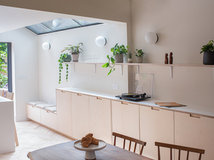

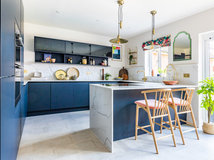
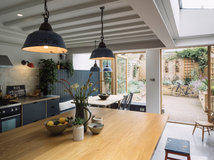
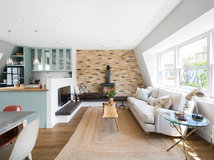

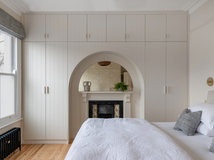
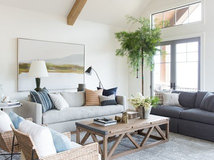
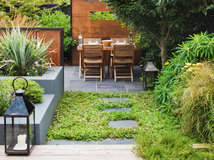
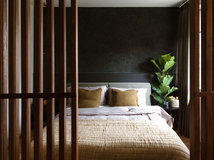
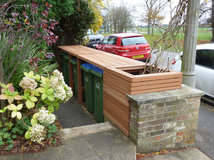
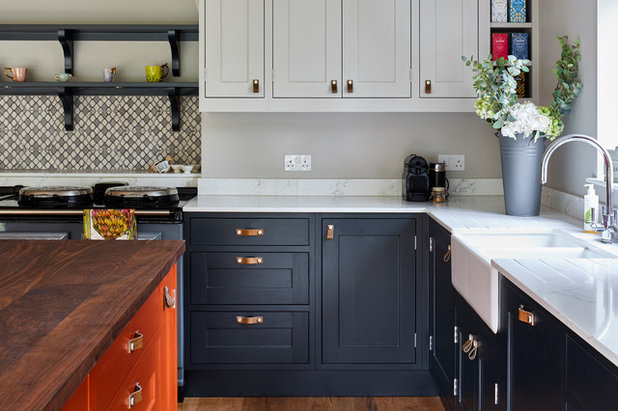
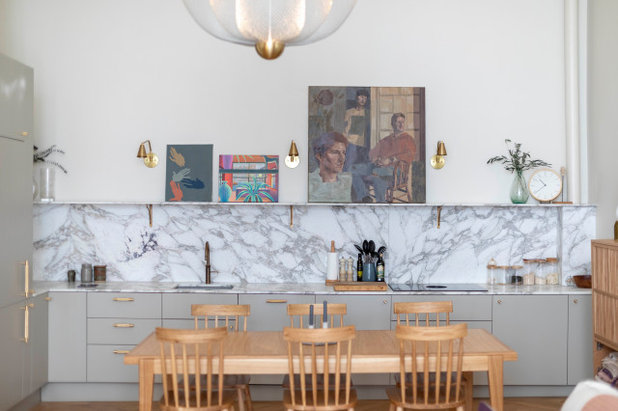
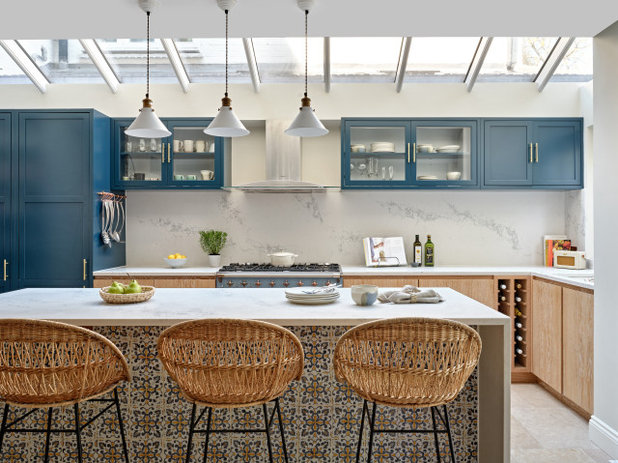
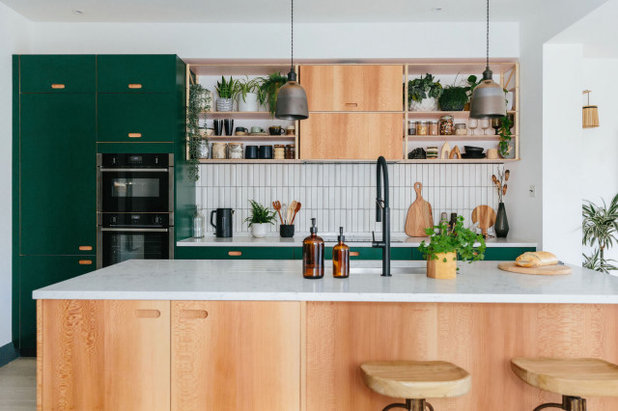
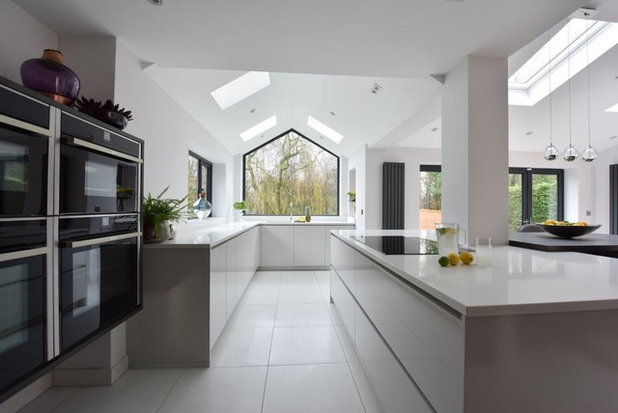
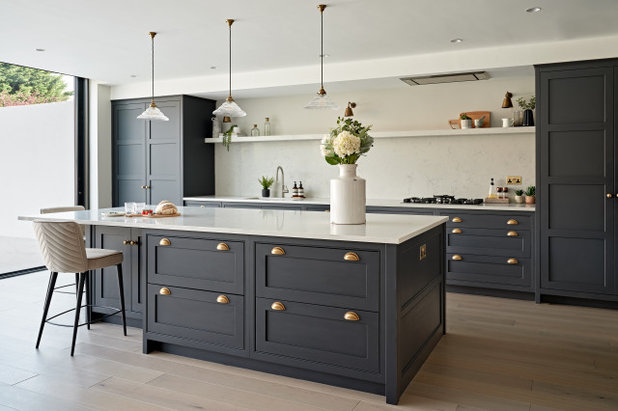
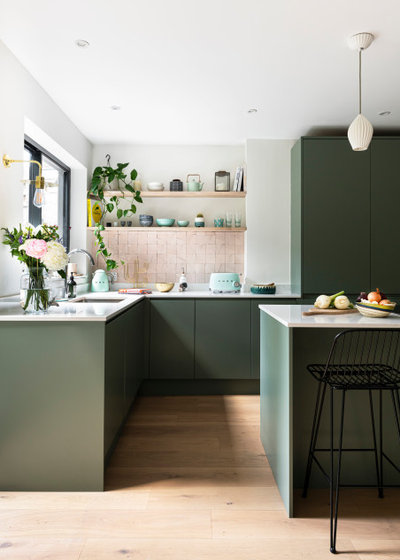

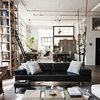
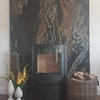
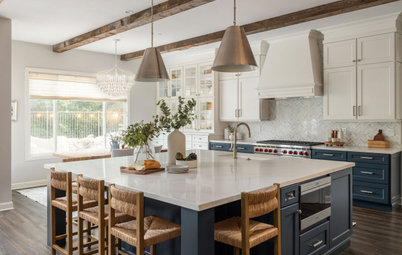
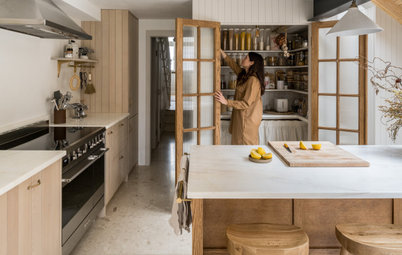
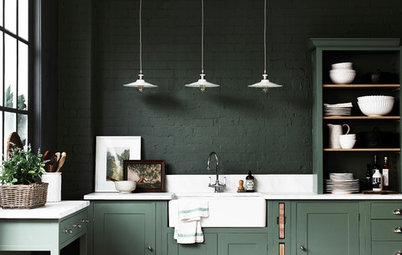
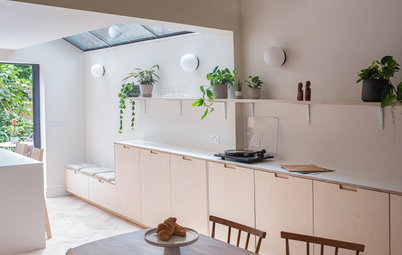
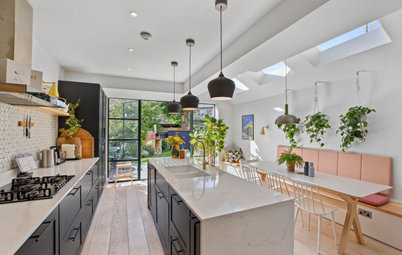
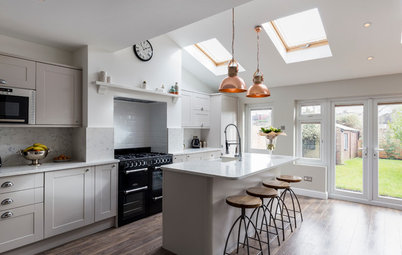
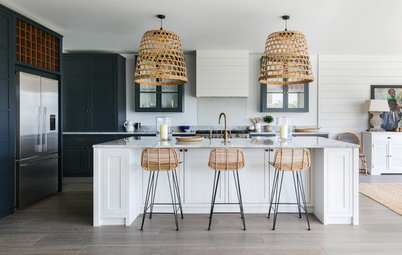

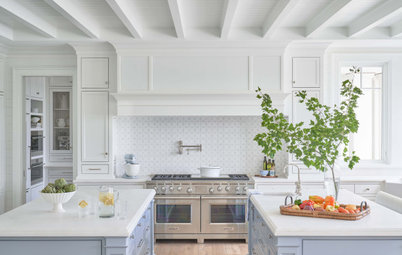
Interesting to note that laminate is not mentioned as a worktop surface. I'm sure that is probably the most popular choice due to cost and durability.
Regarding worktops I have completely black granite. It’s beautiful but not only do I have to clean it but I have to bloody polish it as well to keep the shine. I won’t make this mistake in my next life.
The way that we have redesigned our kitchen, together with our whole apartment, is that the interior designer made the plan according to our needs (we entertain a lot and I am the one cooking) and then the kitchen designer/manufacturer followed up. I love my kitchen….
If you need a list of all my appliances, just let me know.